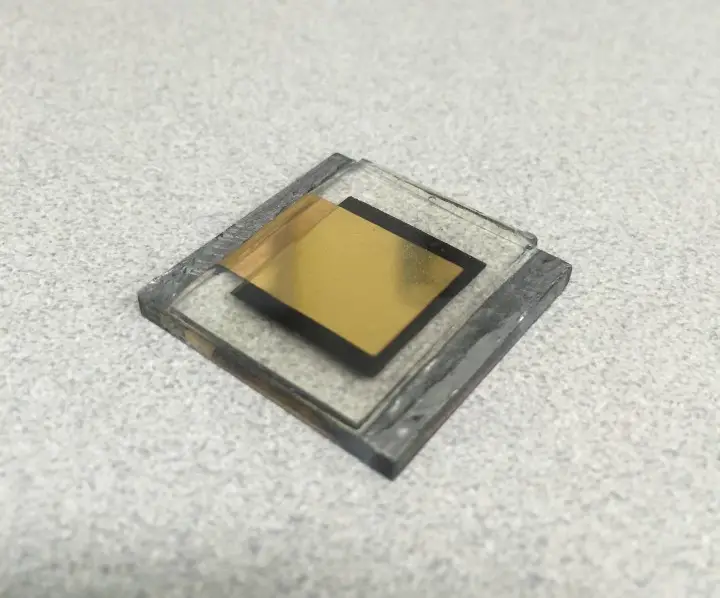
1st August 2017 New efficiency record for perovskite solar cells Researchers in South Korea have announced a new world record efficiency of 22.1% for perovskite solar cells.
Each year, the efficiency of solar power continues to inch upward, as new technological advances are made. Now, researchers at the Ulsan National Institute of Science and Technology (UNIST), South Korea, have announced the latest breakthrough in perovskite solar cells, which is published in the journal Science. There are many different types of solar power. A major advantage of perovskite solar cells (PSCs) is that it is possible to make them with cheaper and more commonly available metals and chemicals, as opposed to the expensive raw materials used in other silicon substitutes. They also have more flexibility in terms of colour adjustment, enabling them to be fabricated in more aesthetically-pleasing ways on rooftops, for example. They can even be processed as additional layers on top of silicon panels, to improve the appearance of the more advanced and expensive panels. The formation of a dense and uniform thin layer on the substrates is crucial for high-performance PSCs. The concentration of defect states, which reduce a cell's performance by decreasing the open-circuit voltage and short-circuit current density, needs to be as low as possible. The research team at UNIST reports that careful control of the growth conditions of perovskite layers with management of deficient halide anions is essential for realising high-efficiency thin-film PSCs based on lead-halide-perovskite absorbers. In their study, they demonstrated the introduction of additional iodide ions into the organic cation solution, which are used to form the perovskite layers through an intramolecular exchanging process, decreasing the concentration of deep-level defects. "This study can improve the current record efficiency of perovskite solar cells from 20.1% to 22.1%," says Professor Sang-Il Seok, from the School of Energy and Chemical Engineering at UNIST. "This will accelerate the commercialisation of low-cost, high-performance perovskite solar cells." The energy conversion efficiency of 22.1% has now been officially certified by the National Renewable Energy Laboratory (NREL) in the USA. ---
Comments »
|







